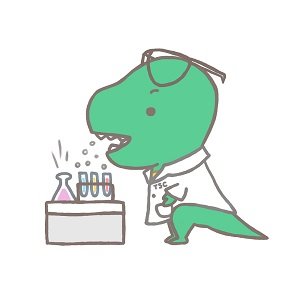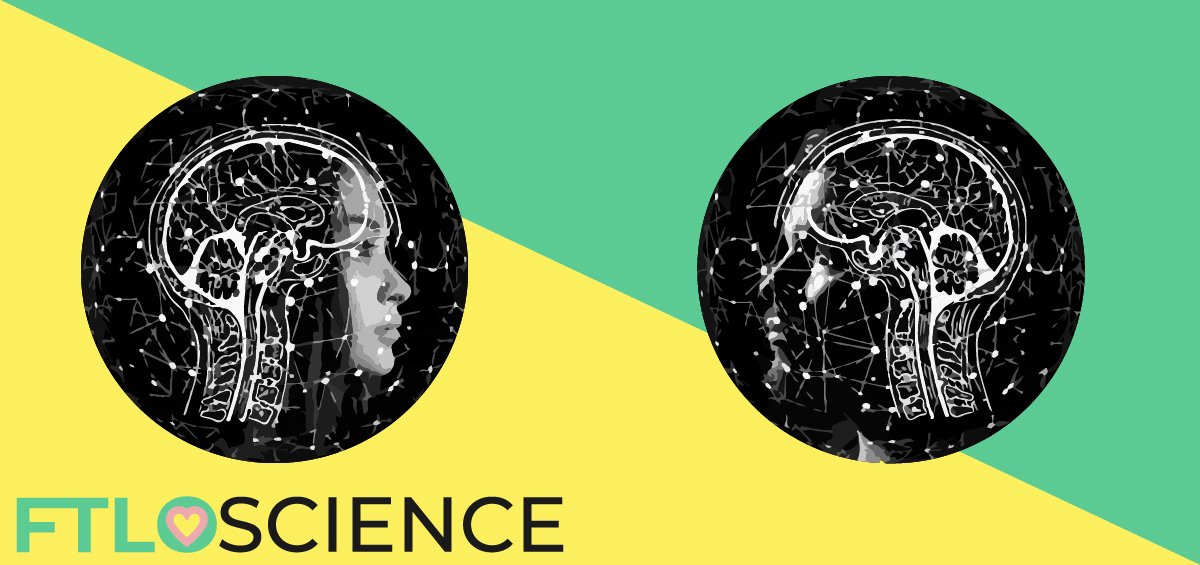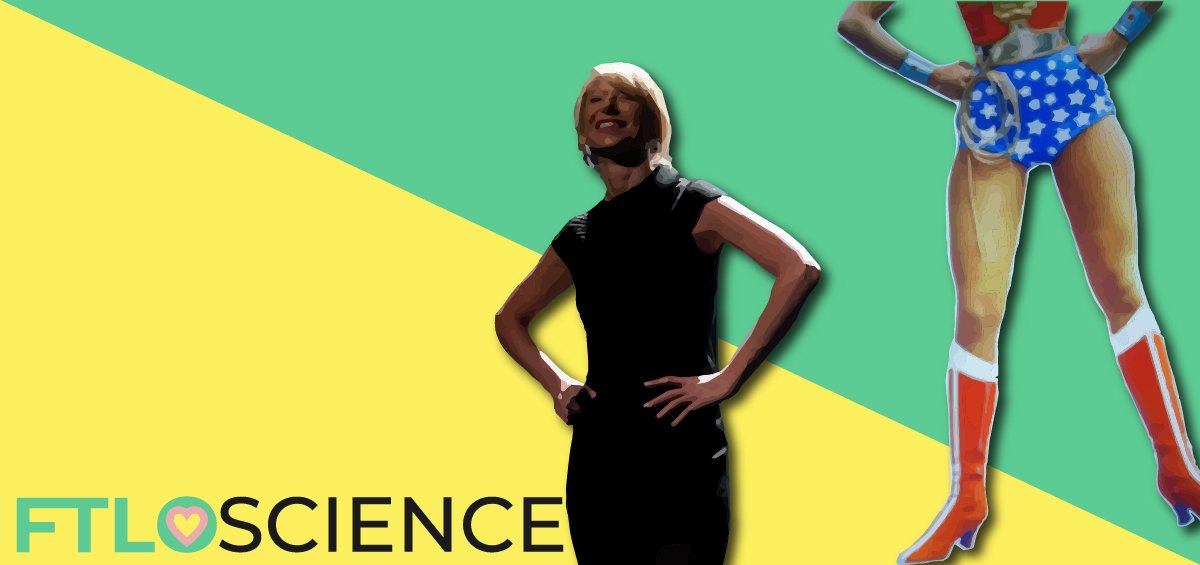When a particle gets small enough, it starts to behave strangely, like having the ability to be in two places at once. Protons, electrons and even whole atoms can exhibit these quantum effects and perform logic-defying acts. By studying these particles in the human brain, researchers are trying to see if processes like information storage and even decision-making are influenced by quantum effects. Is there the equivalent of a quantum computer lurking inside our brains?
Introducing Strange Quantum Effects
Welcome to quantum mechanics, which is simply the study of very very tiny objects. The world of quantum particles is a strange place, completely counter-intuitive to the ‘physics of large objects’ that we have become so accustomed to. This world isn’t foreign, however, because everything in the universe (even you) is made up of these quantum particles. But because we are so big, it is difficult in our everyday lives to notice that quantum particles behave differently. Two of the most ‘crazy and magical’ properties that these particles have are:
Entanglement
Quantum particles can be ‘connected’ to other particles after some sort of interaction, becoming what we call ‘entangled’. For example, when one particle’s spin is measured in the ‘up’ state, we would know that the other particle, even if it was very far away, would be in the ‘down’ state. This form of instant (i.e. faster than the speed of light) correlation is impossible with larger objects! Collections of entangled particles (if they existed in the brain) could therefore behave in an orchestrated or coordinated manner over long distances, making connections between different parts of the brain.
Superposition
Quantum particles exist in a superposition or a ‘mixture’ of states prior to any measurement. For example, an electron may be in two different energy levels or be spinning up and down at the same time. When measured, however, they will always give a specific energy level or spin direction.
When using classical processors, such as in our computers, we assign a definite ‘1’ or ‘0’ to a bit, a unit of information. In a quantum processor, we could assign the value ‘1’ to the spin-down state and ‘0’ to the spin-up state of a particle, like an electron. However, until we measure the state, it will be ‘1’ and ‘0’ at the same time—just as a spinning coin is neither heads nor tails while it is still spinning.
Hence, one quantum bit, or qubit, can represent both 1 AND 0 values at the same time, unlike the classical processor’s bit which can only represent 1 OR 0 at a point in time. As shown in the figure below, the bit is binary and point-like but the qubit is fuzzy, which allows much more information to be processed in parallel, taking advantage of the property of superpositions.

However, this ‘strangeness’ has allowed us to develop technologies that might one day be able to harness this power. Various physical attributes of elementary particles can be assigned the 1s and 0s of traditional binary systems. For example, we can use the spin-up or spin-down states of the nucleus of an atom, the different energy levels of electrons in an atom, or even the orientation of the plane of polarization of light particles or photons. Quantum computers can employ quantum processors that use elementary particles like neutrons, electrons and even atoms for information processing, instead of relying primarily on integrated circuits and transistors like classical processors.
Quantum Computing using Phosphorus Atoms
In 2013, a research team led by Australian engineers from the University of New South Wales (UNSW) created the first working quantum bit based on the spin of a single phosphorus atom within a protective bed of non-magnetic silicon atoms with zero spin. In a ground-breaking paper in the journal Nature, they reported a record-high accuracy in writing and reading quantum information using a phosphorous atom’s nuclear spin2.
At this point, it isn’t that important to define what spin is. It’s simply a measurable property or ‘state’ of a particle, just like heads and tails are measurable outcomes of a coin. The nucleus of a phosphorus atom has the lowest spin value of ½, which also happens to make it less sensitive to electric and magnetic fields. This is important because any quantum noise from these fields will cause the quantum state of particles to collapse, before any useful processing can be done. It can be further shielded from this ‘noise’ by the surrounding bed of zero-spin silicon atoms.
What this means is that the spin value can be stored for a longer period. In quantum computing terminology, we say that the nuclear spin of the phosphorous atom would have a longer coherence time. This is an advantage in quantum computers, as it enables information to be stored in it for a longer time, resulting in a much higher level of accuracy when this information is retrieved.
The core of the phosphorus atom contains a nuclear spin, which could act as an excellent memory storage qubit thanks to its very weak sensitivity to the noise present in the surrounding environment.
Andrew Dzurak, reporting on the UNSW Team’s Work3.
In 2014, another team (this time a Dutch-US collaboration) used the nuclear spins of phosphorus atoms in quantum computing to achieve even greater accuracy of 99.99% and a longer coherence time of above 35 seconds4,5. It might not sound like a lot, but 35 seconds is a lifetime when it comes to quantum coherence!
Quantum Computers in our Brains
So, what does all of this have to do with our brains? There are numerous examples in quantum biology where quantum processing has been suspected to play a role. For example, there is evidence that birds utilize quantum processes in their retinas to navigate across the globe. Even plants use quantum effects to their advantage, with some theories that photosynthesis proceeds more efficiently by achieving long-lived coherent quantum states. In humans, our sense of smell and certain aspects of human vision could require quantum processing to function. Some scientists have even hypothesized that quantum mechanics forms the basis of free will!
With quantum effects linked to complicated biological processes, it is no surprise that we are looking for a quantum system in the human brain, essentially a biological computer! One of the first popular hypotheses was proposed by Roger Penrose, the distinguished physicist, and Stuart Hameroff, an anesthesiologist. They speculated that quantum processing could be occurring in the microstructures within neurons in our brains6. However, most scientists were skeptical as the brain was considered a warm, wet, and noisy environment where quantum coherence, which usually occurs in extremely isolated environments and cold temperatures, would be impossible to achieve.
Neither Penrose nor Hammeroff has given a satisfactory response to this criticism of their ‘quantum computer brain’ theory. However, there have been recent breakthroughs in extending coherence times and research teams around the world are rushing to extend coherence times at room temperatures with some success7,8. So, the jury is still out on the Penrose-Hameroff theory.
Phosphorous Atoms as Qubits
As mentioned, the spins of the nuclei of phosphorus atoms can be sufficiently isolated by the protective cloud of electrons around it and the protective shield of a bed of zero spin atoms. It is also less affected by outside interference because of its weak magnetic field, thus allowing it to preserve quantum coherence. The laboratory studies discussed in the previous section and the experimental results have verified and supported this theory. So, in an environment such as the brain where electric fields abound, the nuclei of phosphorus atoms would be in a sufficiently isolated environment.
In 2015, Matthew Fisher, a physicist at the University of California, produced a model where nuclear spins in phosphorus atoms can serve as biological qubits. This model is much like what was discussed in the previous section which occurred in a laboratory setting; except that now it is being applied to the human brain, where phosphorus is abundant9.
Might we, ourselves, be quantum computers, rather than just clever robots who are designing and building quantum computers?
Matthew Fisher10
The process starts in the cell with a chemical compound called pyrophosphate. It is made of two phosphates, each composed of a phosphorus atom surrounded by multiple oxygen atoms with zero spin (a similar situation as that of the laboratory study discussed above, where the phosphorus atom was nestled inside silicon atoms with zero spin). The interaction between the spins of the phosphates causes them to become entangled, a quantum effect mentioned above. This means that they form pairs with states of +½ and -½, known as a ‘singlet’ state of maximum entanglement.
Pyrophosphate is a key molecule in respiration, being a component of ATP, and all our cells contain the machinery required to break it down. This machinery in the form of enzymes breaks the entangled phosphates apart into two free phosphate ions, which continue to be entangled while they drift away. These entangled phosphates can combine separately with calcium ions and oxygen atoms to become Posner molecules, as shown below.

These clusters provide additional shielding to the entangled pairs from outside interference so that they can maintain coherence for much longer periods of time over long distances in the brain. When Fisher estimated the coherence time for these molecules, it came out as an incredible 105 seconds—almost a whole day12!
Phosphorous Atoms in Brain Function?
Although Fisher does not seem to spell out in any detail what happens next, which is important if we want to get a perspective of the brain as a quantum computer, we will try to do so. Hypothetically, the numerous entangled nuclei of the phosphorus atoms (within Posner molecules) would be spread out over a wide area in the brain. They would be in a superposed state, existing as waves, for some time before they collapse. When the collapse happens, the electrons in the atom respond.
Electrons determine the chemical properties of atoms. So, the collapse causes the chemical properties of the phosphorus atoms to change, resulting in a series of chemical reactions that send a cascade of neurotransmitters into the synapses of neurons. The train of electrochemical signals then integrates to form a perception, which is interpreted based on the life experiences of the person.
This resolves a long-standing question in neuroscience that has baffled scientists: How is the brain able to integrate information from various parts of the brain to form a cohesive perception? Perhaps with ‘Fisher’s mechanism’ (a term that has been freshly minted by this author), a simultaneous collapse of the nuclear spins of entangled phosphorus atoms in various layers and parts of the brain could be the answer.
Limitations of the Model
The most obvious limitation is that currently, Fisher’s ideas have not undergone thorough testing, although certain aspects (for example, the longer coherence time of phosphorus atoms) have already been tested in the laboratory. However, there are plans to do so. The first test will be whether Posner molecules exist in extracellular fluids and whether they could be entangled. Fisher proposes testing this in the laboratory by inducing chemical reactions to entangle phosphorus nuclear spins, then pouring the solution into two test tubes and looking for quantum correlations in the light given out12.
Roger Penrose believes that Fisher’s mechanism can only help to explain long-term memory but may not be sufficient to explain consciousness. He believes that the Penrose-Hameroff hypothesis of the effects localized within microstructures of neurons, which he says are more massive than atomic nuclei, provides a more robust explanation to this end, although most scientists are skeptical. It would be interesting if Posner molecules (with entangled particles) are found in these microstructures, which would at least partially validate both the Fisher and Penrose-Hameroff hypotheses. Everyone likes a happy ending!
In a Nutshell
- Coherence is a key factor in quantum computing. High coherence ensures that information is not lost over a sustained period. It has been shown in the laboratory that quantum computing with isolated and shielded phosphorus atoms results in highly accurate results and longer coherence times.
- Being a key component of ATP (the molecule responsible for respiration), phosphorus is abundant in our cells, especially in the brain.
- The human brain (and perhaps the brains of other animals) might use the nuclear spins of phosphorus atoms as qubits to carry out processes like memory storage, essentially being a quantum computer!
This article was written by Jay Alfred via Write For Us.
Reference
- Image Source: Zhang, J. (2019, Sep 28). What Makes Quantum Computing Special? Medium.com. https://medium.com/@jennyzhanng/what-makes-quantum-computing-special-9680996a390a
- Pla, J., Tan, K., Dehollain, J., Lim, W., Morton, J., Zwanenburg, F., Jamieson, D., Dzurak, A., & Morello, A. (2013). High-fidelity readout and control of a nuclear spin qubit in silicon. Nature, 496(7445), 334-338. https://doi.org/10.1038/nature12011.
- Dzurak, A. (2014, Oct 15). Silicon Qubits Could Be the Key to a Quantum Revolution, SciTech Daily. https://scitechdaily.com/silicon-qubits-key-quantum-revolution/
- Muhonen, J., Dehollain, J., Laucht, A., Hudson, F., Kalra, R., Sekiguchi, T., Itoh, K., Jamieson, D., McCallum, J., Dzurak, A., & Morello, A. (2014). Storing quantum information for 30 seconds in a nanoelectronic device. Nature Nanotechnology, 9(12), 986-991. https://doi.org/10.1038/nnano.2014.211
- Veldhorst, M., Hwang, J., Yang, C., Leenstra, A., de Ronde, B., Dehollain, J., Muhonen, J., Hudson, F., Itoh, K., Morello, A., & Dzurak, A. (2014). An addressable quantum dot qubit with fault-tolerant control-fidelity. Nature Nanotechnology, 9(12), 981-985. https://doi.org/10.1038/nnano.2014.216.
- Hameroff, S., & Penrose, R. (2014). Consciousness in the universe. Physics of Life Reviews, 11(1), 39-78. https://doi.org/10.1016/j.plrev.2013.08.002.
- Herbschleb, E., Kato, H., Maruyama, Y., Danjo, T., Makino, T., Yamasaki, S., Ohki, I., Hayashi, K., Morishita, H., Fujiwara, M., & Mizuochi, N. (2019). Ultra-long coherence times amongst room-temperature solid-state spins. Nature Communications, 10(1), 3766. https://doi.org/10.1038/s41467-019-11776-8
- Miao, K., Blanton, J., Anderson, C., Bourassa, A., Crook, A., Wolfowicz, G., Abe, H., Ohshima, T., & Awschalom, D. (2020). Universal coherence protection in a solid-state spin qubit. Science, eabc5186. https://doi.org/10.1126/science.abc5186.
- Fisher, M. P. A. (2015). Quantum cognition: The possibility of processing with nuclear spins in the brain. Annals of Physics, 362, 593-602. https://doi.org/10.1016/j.aop.2015.08.020
- Fernandes, S. (2018, Mar 27) Are We Quantum Computers? The Current (Science + Technology). https://www.news.ucsb.edu/2018/018840/are-we-quantum-computers
- Swift, M., Van de Walle, C., & Fisher, M. (2018). Posner molecules: from atomic structure to nuclear spins. Physical Chemistry Chemical Physics, 20(18), 12373-12380. https://doi.org/10.1039/c7cp07720c
- Brooks, M. (2015, Dec 15). Is quantum physics behind your brain’s ability to think? New Scientist. https://www.newscientist.com/article/mg22830500-300-is-quantum-physics-behind-your-brains-ability-to-think/
About the Author

This article was written by a contributor. For a full list of guest writers, click here.




